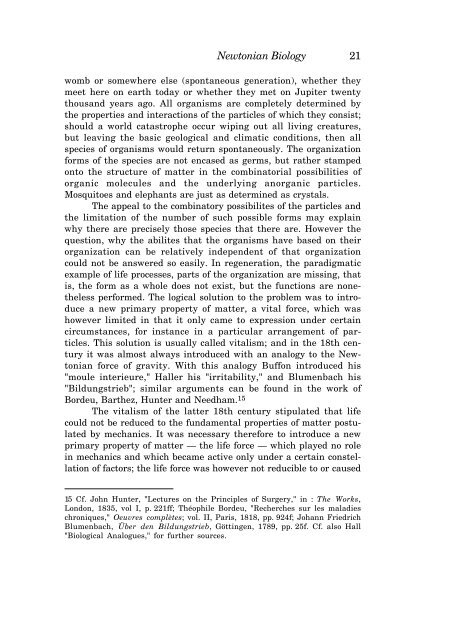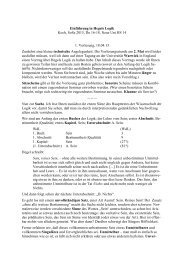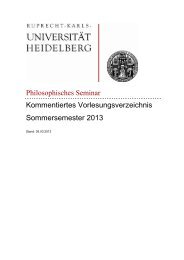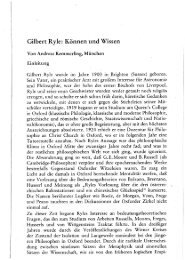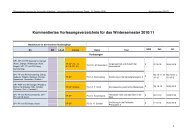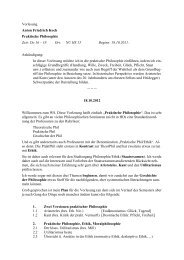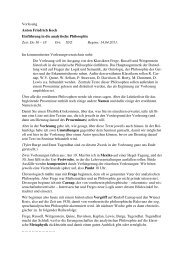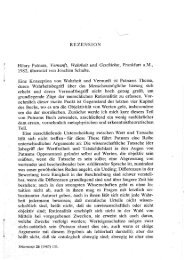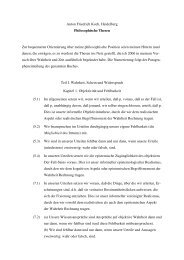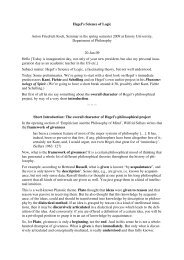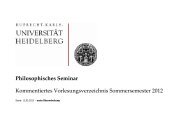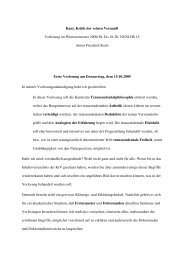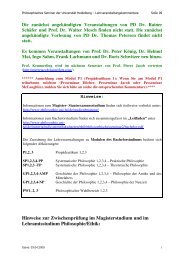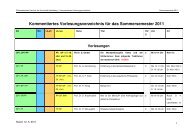KANT'S CRITIQUE OF TELEOLOGY IN BIOLOGICAL EXPLANATION
KANT'S CRITIQUE OF TELEOLOGY IN BIOLOGICAL EXPLANATION
KANT'S CRITIQUE OF TELEOLOGY IN BIOLOGICAL EXPLANATION
Create successful ePaper yourself
Turn your PDF publications into a flip-book with our unique Google optimized e-Paper software.
Newtonian Biology 21<br />
womb or somewhere else (spontaneous generation), whether they<br />
meet here on earth today or whether they met on Jupiter twenty<br />
thousand years ago. All organisms are completely determined by<br />
the properties and interactions of the particles of which they consist;<br />
should a world catastrophe occur wiping out all living creatures,<br />
but leaving the basic geological and climatic conditions, then all<br />
species of organisms would return spontaneously. The organization<br />
forms of the species are not encased as germs, but rather stamped<br />
onto the structure of matter in the combinatorial possibilities of<br />
organic molecules and the underlying anorganic particles.<br />
Mosquitoes and elephants are just as determined as crystals.<br />
The appeal to the combinatory possibilites of the particles and<br />
the limitation of the number of such possible forms may explain<br />
why there are precisely those species that there are. However the<br />
question, why the abilites that the organisms have based on their<br />
organization can be relatively independent of that organization<br />
could not be answered so easily. In regeneration, the paradigmatic<br />
example of life processes, parts of the organization are missing, that<br />
is, the form as a whole does not exist, but the functions are nonetheless<br />
performed. The logical solution to the problem was to introduce<br />
a new primary property of matter, a vital force, which was<br />
however limited in that it only came to expression under certain<br />
circumstances, for instance in a particular arrangement of particles.<br />
This solution is usually called vitalism; and in the 18th century<br />
it was almost always introduced with an analogy to the Newtonian<br />
force of gravity. With this analogy Buffon introduced his<br />
"moule interieure," Haller his "irritability," and Blumenbach his<br />
"Bildungstrieb"; similar arguments can be found in the work of<br />
Bordeu, Barthez, Hunter and Needham. 15<br />
The vitalism of the latter 18th century stipulated that life<br />
could not be reduced to the fundamental properties of matter postulated<br />
by mechanics. It was necessary therefore to introduce a new<br />
primary property of matter — the life force — which played no role<br />
in mechanics and which became active only under a certain constellation<br />
of factors; the life force was however not reducible to or caused<br />
15 Cf. John Hunter, "Lectures on the Principles of Surgery," in : The Works,<br />
London, 1835, vol I, p. 221ff; Théophile Bordeu, "Recherches sur les maladies<br />
chroniques," Oeuvres complètes; vol. II, Paris, 1818, pp. 924f; Johann Friedrich<br />
Blumenbach, Über den Bildungstrieb, Göttingen, 1789, pp. 25f. Cf. also Hall<br />
"Biological Analogues," for further sources.


